You are here
New Releases
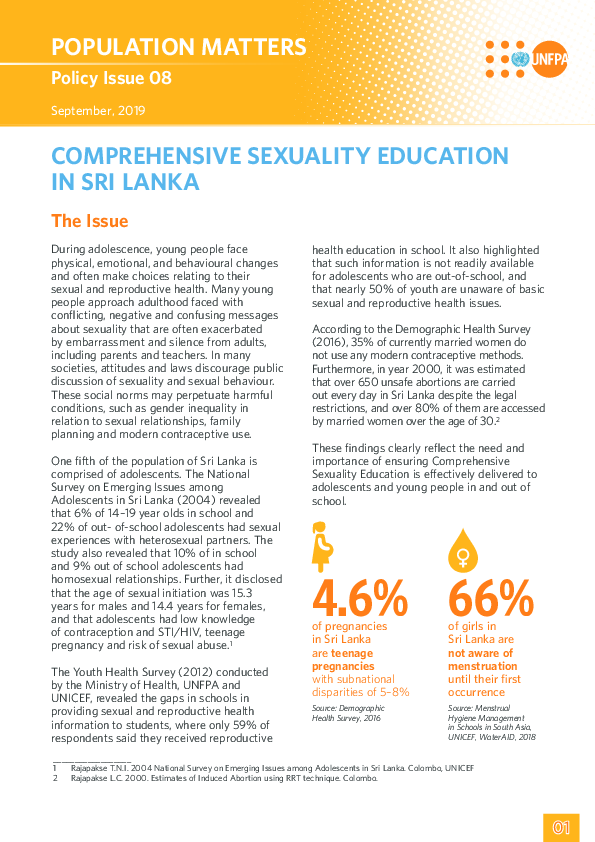
Policy Brief 8 - Comprehensive Sexuality Education in Sri Lanka
Comprehensive Sexuality Education (CSE) is a curriculum-based process of teaching and learning about the cognitive, emotional, physical and social aspects of sexuality, reproductive health and rights. This policy brief is based on the a study by Prof. Karunatilake on 'An Analysis of Knowledge and Attitudes of Children's Sexaul and Reproductive Health Education', which was commissioned by the Ministry of Education and supported by UNFPA Sri Lanka.
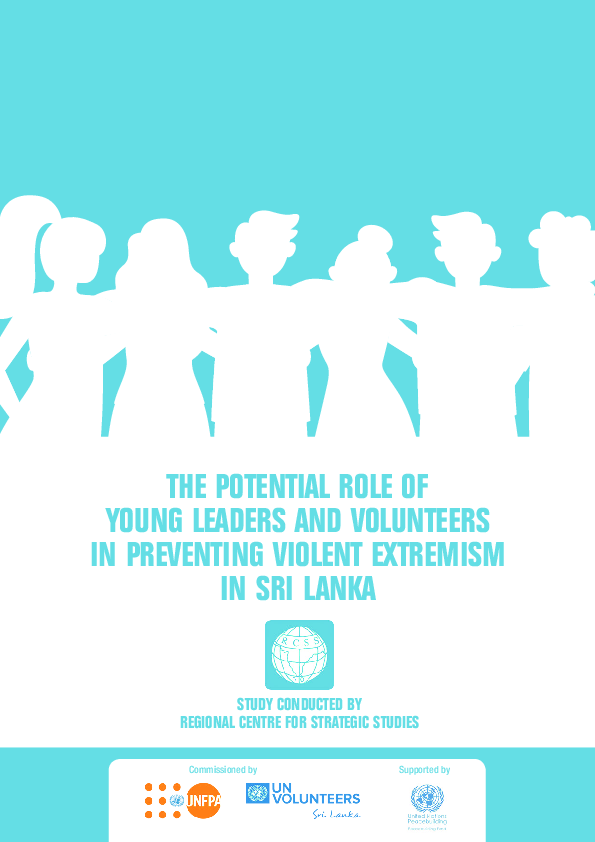
The Potential Role of Young Leaders and Volunteers in Preventing Violent Extremism in Sri Lanka
Understanding the role of youth in preventing violent extremism, the United Nations Population Fund (UNFPA) and UN Volunteers (UNV) commissioned a study on ‘The Potential Role of Young Leaders and Volunteers in Preventing Violent Extremism in Sri Lanka’ in September 2018. The study was conducted by the Regional Centre for Strategic Studies (RCSS), with a sample size of 2,800 young people between the ages 15-29 years from the Northern, Eastern, Southern, and Central Provinces. While the field study was carried out pre-Easter Sunday attacks, from November – December 2018, the findings revealed that 25% of Sri Lankan youth from the four provinces believed that their peers are attracted to ideologies of violent extremism.
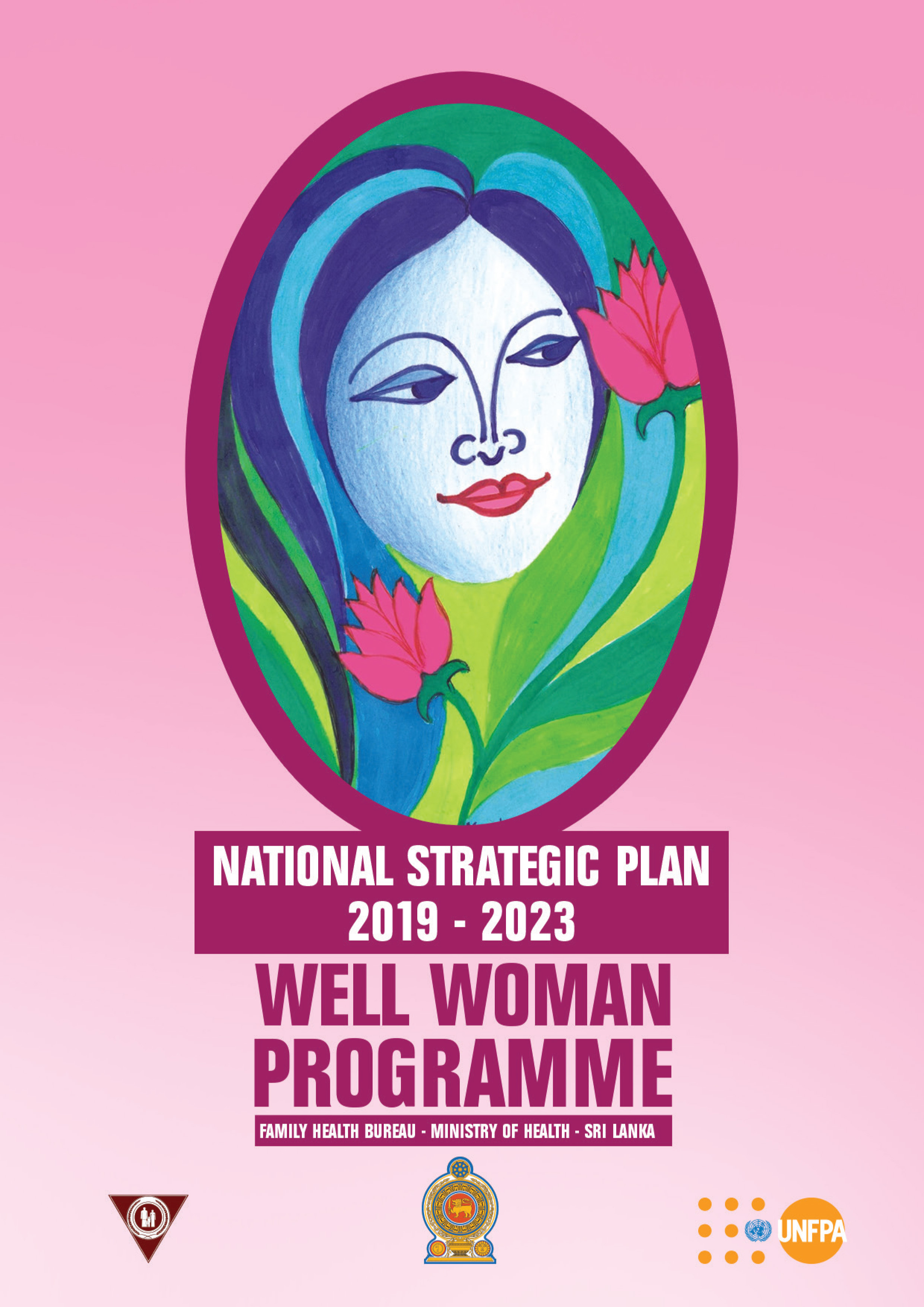
National Strategic Plan (2019 - 2023): Well Woman Programme
The Well Woman Programme - National Strategic Plan (2019-2023) aims to ensure by 2023, every woman in the targeted age cohorts, especially those farthest behind, has utilized quality health services through the Well Woman Clinics in Sri Lanka.
Perspectives: Reflecting on five decades of sexual and reproductive health and rights in Sri Lanka
Sri Lanka established the first maternity hospital in 1879, making it the second maternity hospital in South Asia. Since then, Sri Lanka has come a very long way.
With 2,100 mothers dying per 100,000 live births at the time, today this number has been brought down drastically to 39.3, which is a result of continuous investments and policy-level engagements in advancing maternal healthcare in Sri Lanka.
In 1969, UNFPA was established globally, followed by its presence in Sri Lanka in 1973. With continuous support to the Government of Sri Lanka, the country has achieved remarkable progress, boasting the best indicators for maternal healthcare in the region, today.
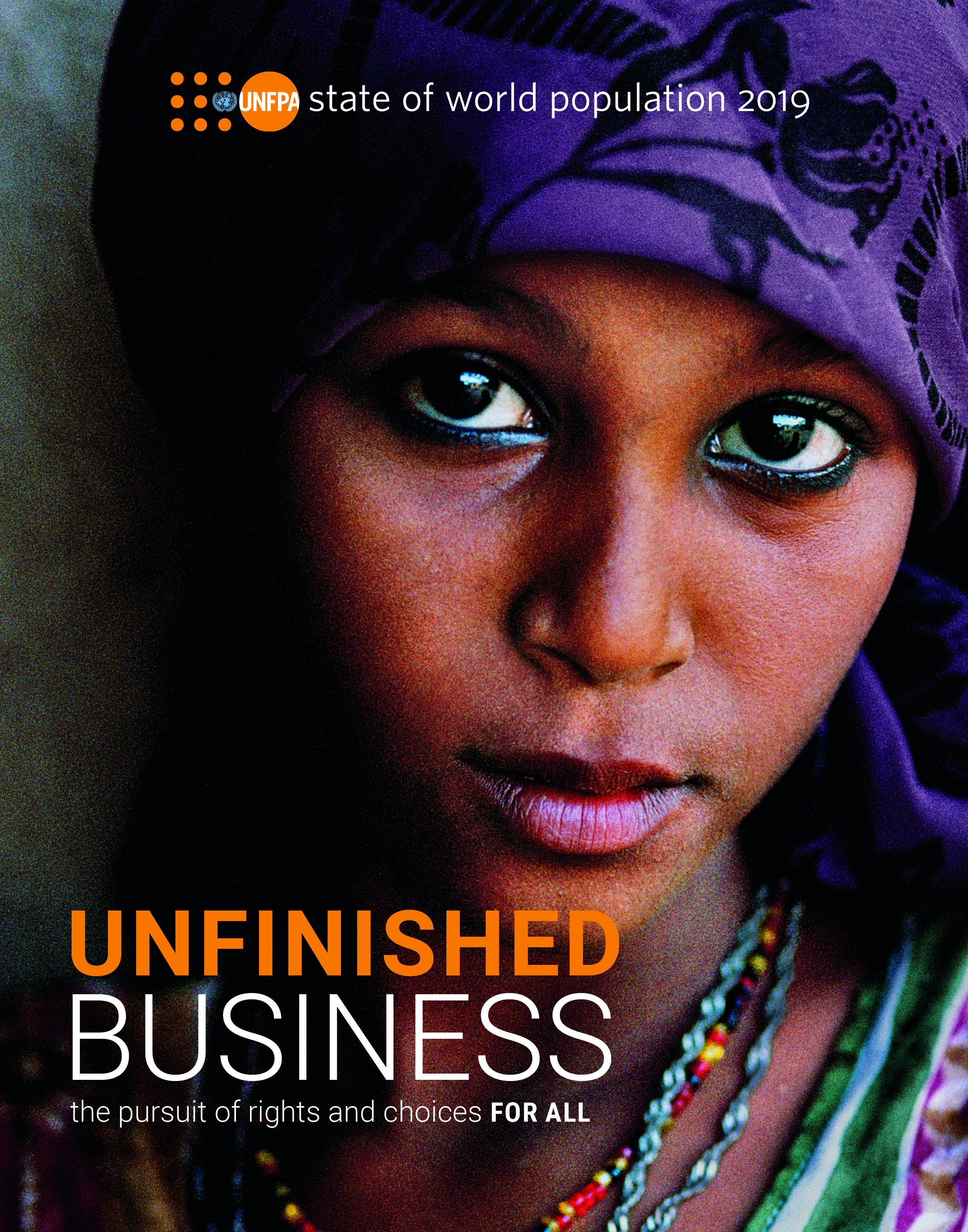
Unfinished Business: The Pursuit of Rights and Choices for All
Remarkable gains have been made in sexual and reproductive health and rights since 1969, when UNFPA was established. But despite progress, hundreds of millions of women today still face economic, social, institutional and other barriers that prevent them from making their own decisions about whether, when, how often and with whom to become pregnant.
The pursuit of rights and choices is an ongoing one, with new challenges emerging all the time.
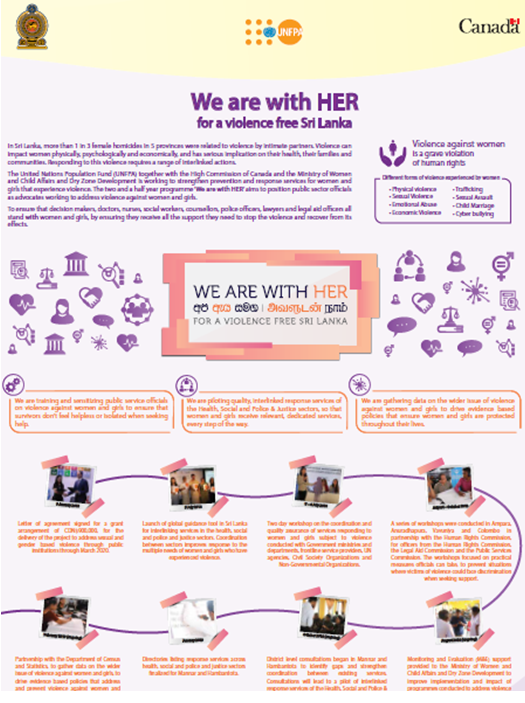
We are with HER - For a violence free Sri Lanka
On International Women's Day 2019, the United Nations Population Fund (UNFPA) in Sri Lanka released a progress update summary about the 3 year project funded by the Canadian Government in strengthening public institutions to respond to gender-based violence. The project titled 'We Are With Her' will be completed in March 2020.
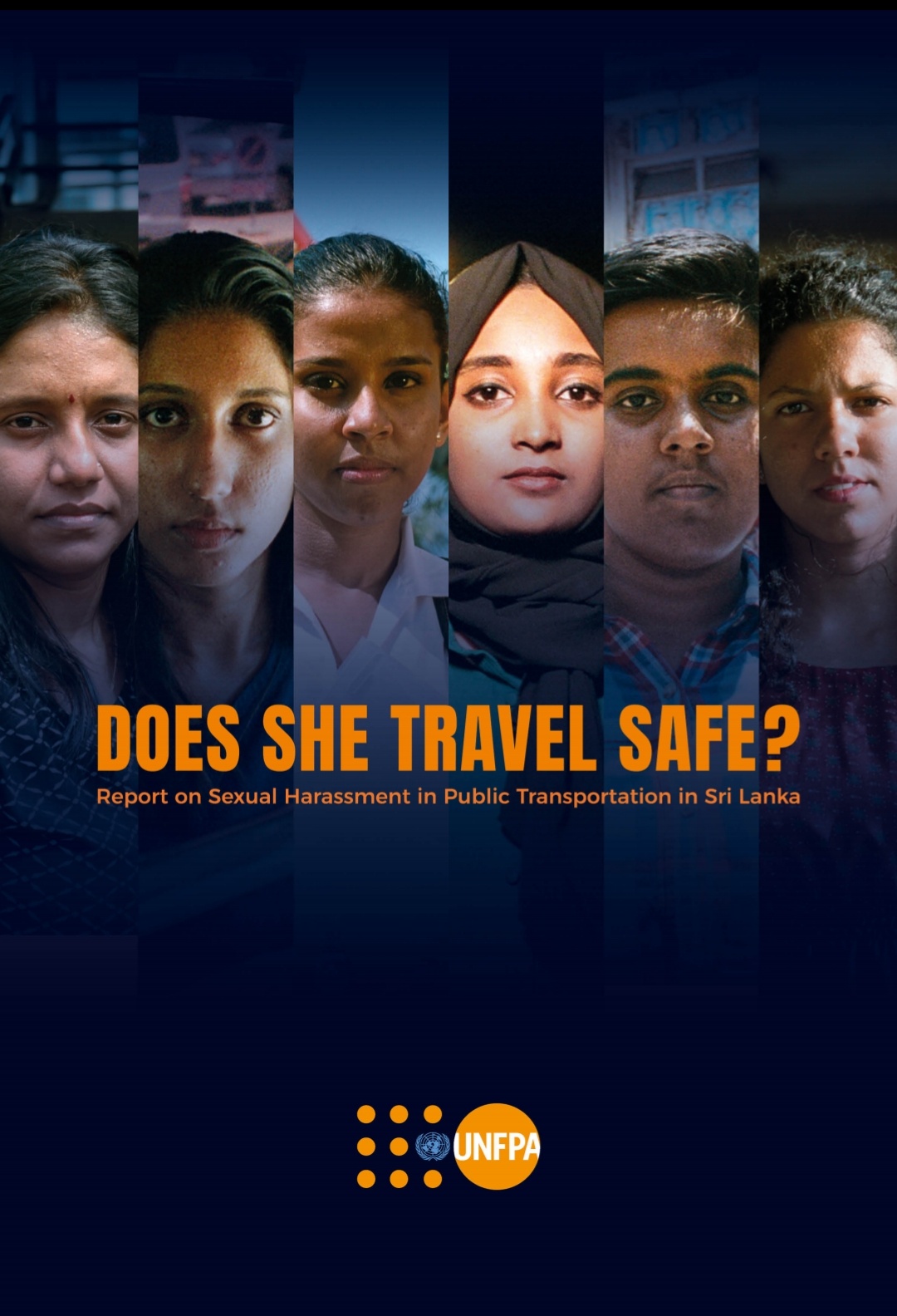
Does She Travel Safe?
Sexual harassment is a grave violation of human rights. According to the findings of the study conducted by the United Nations Population Fund (UNFPA), 90% of Sri Lankan women and girls have faced sexual harassment in public buses and trains at least once in their lifetime. Only 4% of those affected sought help from the police.
State of World Population 2018
Not so long ago, most people had large families: five children, on average.
Where once there was one global fertility rate, today there are many, with differences wider than at any point in human history.
Family size, whether small or large, is intertwined with reproductive rights, which are tied to many other rights, such as thoise to health and education, adequate income and the freedom to make choices and non-discrimination.
Where all rights are realized, people tend to thrive. Where they aer not, people are not able to realize their potential, and fertility rates tend to be higher than what most people really want.
Montage of Sexuality
Sexuality is an intrinsic part of life and connotes the totality of a human being. Unlike the word ‘sex’ that represents a physiologic act or the categorizations into which human beings are often boxed into; sexuality denotes the most intimate feelings and deepest longings of humans to find sexual expression and meaningful relationships with others and often with their own identities.
Making Active Ageing a Reality
By 2030, 1 in 5 people in Sri Lanka will be above the age of 60 years. This means that Sri Lanka is currently facing a demographic transition, with a rapidly ageing population. The speed of ageing in Sri Lanka is the highest in the South Asia region. Ageing is a triumph of development and should be seen as a success story for public health policies and socioeconomic development. A favorable combination of lower fertility, lower mortality and international migration trends lead towards a transition of the age structure in the country. Initially this has resulted in a large cohort of young people, creating the ‘demographic dividend’ phase, which is still continuing while at the same time leading to a significant increase in the proportion of the older population. Data shows that the oldest age category (75+ years) is increasing in comparison to the young-old age category (60-74 years). Further, evidence shows that women continue to outnumber men in the old ages due to higher life expectancy among females. This marks the feminization of ageing in Sri Lanka.